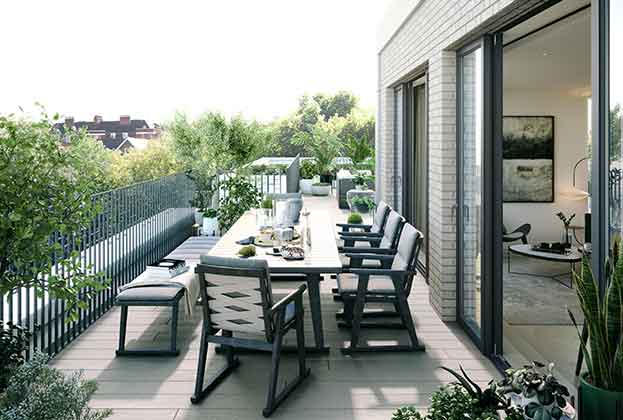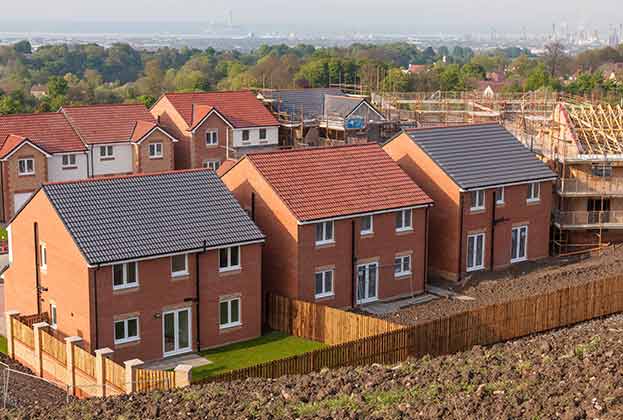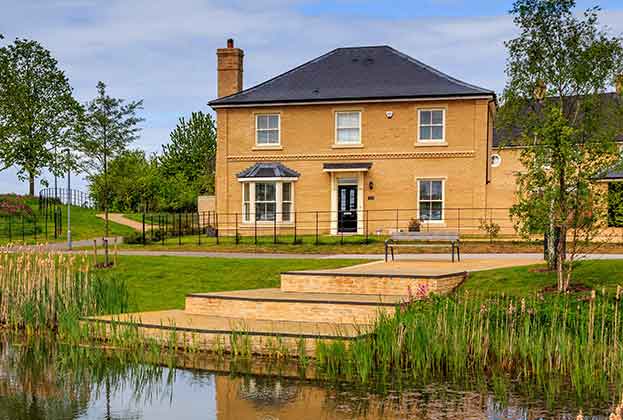Are developers overlooking key demographics for their properties? We examine who chooses to buy new build, what they choose and the opportunity to build for those who don’t
We need to build the right homes in the right places, as the Government set out in ‘Fixing the broken housing market ’ in 2017. However, we also need to be building the right type of homes for the right people, now and in the future. Building what the private market wants to buy, which makes up around 80,000 new homes sold per year in the UK, is vital to supporting delivery of new housing.
Young families are the largest new build buyer group commonly using Help to Buy, according to our analysis. By contrast, the over-40s without children living at home are least likely to buy a new home. To remain resilient, as Help to Buy tapers and ends, new build developments have the opportunity to attract a broader range of buyers. An additional 8,700 (11%) homes could be sold to owner-occupiers each year across the UK if just 10% of buyers who are singles and couples over 40 could be attracted to purchase a new home, rather than the current 7%.
A broader demographic gives a place a greater sense of social and community value, something buyers are actively seeking
Savills Research
Delivering to a broader range of buyers also spreads the risk if some groups are affected more than others by economic conditions. A broader demographic additionally gives a place a greater depth of social and community value, something buyers are more actively seeking.
This is the largest buyer group in the new build market, making up 30% of all new build owner-occupier purchasers. They also have the greatest tendency to buy new homes over second-hand ones, with 14% of them doing so compared with the average of 10%.
There is little difference between the incomes for this group buying a new home against a second-hand one. Young families typically buy a 1,000 sq ft new home. Their high use of Help to Buy is enabling them to buy slightly larger and more expensive new homes – 8% bigger and 22% higher value than in the second-hand market.
Without Help to Buy, lower income young families will be unable to afford to buy a new home unless there is comparable financial support. Retaining those with higher incomes will need to be a key focus when the new build market is on a more level playing field with the second-hand market.
Providing affordable family homes in areas with good primary schools, nurseries, playgrounds and parks is important to attracting this group.
This group has a higher than average tendency to buy a new home. They have 30% higher incomes and pay 26% more for a new home compared with those buying second-hand, despite buying similar-sized properties of around 900 sq ft.
Lower-income couples and singles are able to access second-hand properties but not new ones due to the higher values. This group is the most likely to move to higher-density urban new build.
Providing more homes ranging around 900 sq ft, in well-connected places with access to cafes, restaurants and convenience retail will be key to attracting this group. Health and wellbeing are important to them so amenities for exercise, socialising and outdoor space will help attract this group. Some will also be considering starting a family so nurseries and playparks will factor in their choice of home.
This demographic accounts for 18% of new build sales to owner-occupier buyers. They are only slightly more likely to buy new build than the average buyer. They buy the largest new homes, averaging 1,200 sq ft, and move to much larger homes when buying new build (18% bigger).
There is little difference between the incomes for this group buying a new home against a second-hand one, but they pay 21% more on average for a new home, with a significant proportion using Help to Buy to enable them to do so.
Providing larger homes that this group can still afford in areas with schools, parks, sports facilities and convenience retail are important factors.
This group is less inclined to buy a new home over a second-hand one – just 7% of them do – and rarely use Help to Buy. In a similar way to their counterparts living with children, they choose much larger homes when buying new build – 17% bigger at 1,100 sq ft. However, those buying new homes in this group have 24% higher incomes and buy more expensive homes (29% higher value) than those buying second-hand properties.
Providing spacious homes in high-quality environments with a strong community will be important for attracting this group. Space to work at home and access to health services and convenience stores are also important.
If 10% of this market rather than 7% could be attracted to new build, it would equate to 4,900 more sales per year.
This group includes empty nesters and older singles and couples without children who are nearing, or at, retirement age. They are less inclined to buy a new home than a second-hand one, with only 7% doing so. They are more likely to have equity and those buying new build have 27% higher incomes than those buying second-hand homes. The new homes this group buys are 16% larger, averaging 1,100 sq ft, and 30% higher value than the second-hand homes purchased. When buying a new home, they are more likely to choose a flat or detached home compared with the second-hand market.
If 10% of the current over-60s market rather than 7% could be attracted to new build, it would equate to 3,800 more sales per year
Savills Research
A strong community and proximity to amenities and health services are relevant to this group, as are homes that need minimum maintenance and are energy efficient. When they do move to new build, currently they tend to be more attracted to smaller, more rural developments, providing greater opportunities for SMEs to cater for this market. However, there is also the opportunity to attract this group to other settings if the right product was offered.
There is a huge opportunity to provide housing for this group. Many are living in large family homes and could downsize to a more appropriate home to suit their needs. As we concluded in our 2018 Savills Spotlight on Retirement Living, the UK’s retirement housing stock needs to grow by 65% to 1.2 million homes to meet future demand. If 10% of the current over-60s market rather than 7% could be attracted to new build, it would equate to 3,800 more sales per year.
Note: This analysis has been undertaken using Experian household and mover (based on change of address event) demographics and incomes linked to Land Registry sales data and energy performance certificates. It also draws on findings published in the Savills and NHBC 2018 report: Beyond location, location, location: priorities of new-home buyers
Regional Help to Buy impact
The challenges of selling new homes without Help to Buy differ in higher and lower-value areas. In more affordable markets in England, Help to Buy enables people to purchase a bigger home. In less affordable areas, it allows households to get on the housing ladder.
In the North West and North East, where house prices are more affordable, in 90% and 92% of local authorities the average Help to Buy home sold has a higher value than the average house price in the area. In the South East and East, where affordability is more stretched, in just 28% and 29% of local authorities the average Help to Buy value is higher than the average.
When the regional caps are introduced in England from April 2021, the Midlands and the North will be most affected. We estimate that 70% of established families and 50% of young families using Help to Buy are currently purchasing a home over the regional cap in the North East, for example.
In the South, the caps are much higher and will have less of an effect – just 38% and 25% of established and young families are purchasing homes over the cap in the South East. In the short term, Help to Buy is likely to become more attractive to some. Many lenders have restricted their high loan to value products during this uncertainty which means that those who were depending on a 95% mortgage may find Help to Buy is the only path.
New houses: smaller size, larger number?
There is the opportunity for new build to gain greater market share across the market by providing homes that meet buyers’ preferences, especially if they can’t be met in the second-hand market. Additionally, we have identified a gap for smaller houses. New houses sold in the past few years are larger than second-hand houses, and we calculate that there is the opportunity to provide an additional 5,400 houses that are up to 1,100 sq ft per year. The average new house sold in the past three years is 1,120 sq ft, 18% larger than second-hand ones at 950 sq ft. In particular, there are a greater proportion of new houses sold between 1,100 sq ft and 1,600 sq ft compared with the secondhand market: 40% versus 23% of sales.
This is great for providing larger family housing and more spacious living with room to work at home, but it may become more challenging to support in such high volumes when Help to Buy tapers and ends, reducing some buyers’ purchasing power.
Before Help to Buy was introduced, new houses sold were still larger than second-hand ones. However, new houses are now 6% larger on average than in 2012 when the typical new house sold was 1,050 sq ft.
Recently, 47% of new houses sold were between 624 sq ft (the minimum space standard for a two-storey home) and 1,100 sq ft, compared with 60% in the second-hand market and 50% in the pre-Help to Buy new build market. If 10% of this market were new houses, an additional 5,400 homes of this size could be built for sale each year.
Read the articles within Spotlight: Delivering new homes resiliently below.
.jpg)



